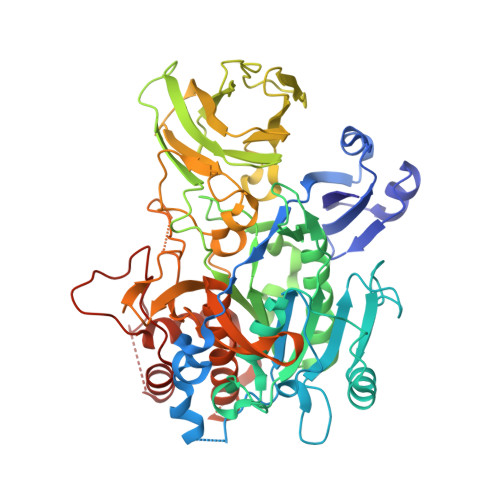The CspC pseudoprotease regulates germination of Clostridioides difficile spores in response to multiple environmental signals.
Rohlfing, A.E., Eckenroth, B.E., Forster, E.R., Kevorkian, Y., Donnelly, M.L., Benito de la Puebla, H., Doublie, S., Shen, A.(2019) PLoS Genet 15: e1008224-e1008224
- PubMed: 31276487
- DOI: https://doi.org/10.1371/journal.pgen.1008224
- Primary Citation of Related Structures:
6MW4 - PubMed Abstract:
The gastrointestinal pathogen, Clostridioides difficile, initiates infection when its metabolically dormant spore form germinates in the mammalian gut. While most spore-forming bacteria use transmembrane germinant receptors to sense nutrient germinants, C. difficile is thought to use the soluble pseudoprotease, CspC, to detect bile acid germinants. To gain insight into CspC's unique mechanism of action, we solved its crystal structure. Guided by this structure, we identified CspC mutations that confer either hypo- or hyper-sensitivity to bile acid germinant. Surprisingly, hyper-sensitive CspC variants exhibited bile acid-independent germination as well as increased sensitivity to amino acid and/or calcium co-germinants. Since mutations in specific residues altered CspC's responsiveness to these different signals, CspC plays a critical role in regulating C. difficile spore germination in response to multiple environmental signals. Taken together, these studies implicate CspC as being intimately involved in the detection of distinct classes of co-germinants in addition to bile acids and thus raises the possibility that CspC functions as a signaling node rather than a ligand-binding receptor.
- Department of Molecular Biology and Microbiology, Tufts University School of Medicine, Boston, Massachusetts, United States of America.
Organizational Affiliation:

















